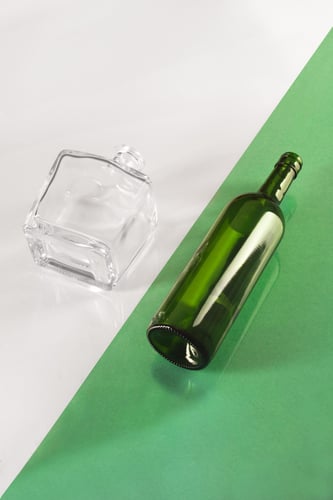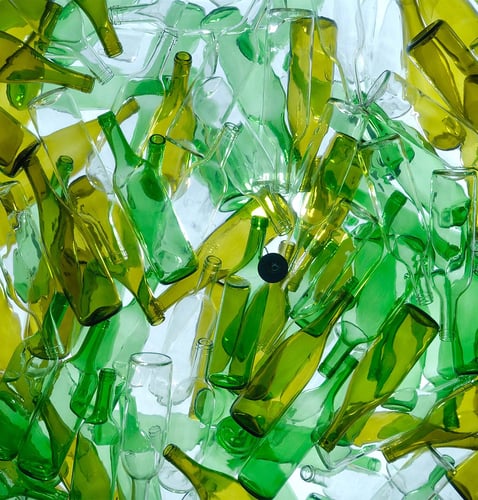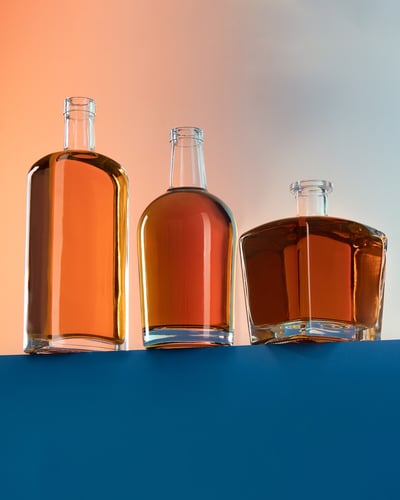Beer bottle: Why is it made with green or brown glass?

Beer has existed since ancient Egyptians. In the 19th century, beer bottles became popular as storing it in glass kept it fresh.
Initially, beer was stored in transparent glass. Sunlight altered its flavor due to UV rays, causing off-putting odors.
The solution was using brown bottles to block UV rays. Post-World War II, a shortage of brown glass made green bottles popular.
As a result, beer drinkers began associating green and brown beer bottles with higher-quality brews.
Beer Bottle Colors
The bottle color can vary depending on the beer type and brand, with amber, transparent, and green being most common.
Amber
Amber is the oldest and most used bottle color. It protects beer from UV rays, preventing flavor and aroma damage.
While amber is the most distinctive and historically used beer bottles color, it stands out on shelves and is increasingly popular in craft beer markets.
Green
For a more visually impactful option, consider green glass. It conveys a slightly nostalgic historical character and pairs well with older-style beers and brands
Green beer bottles provides slightly more UV protection than transparent glass.
Transparent
Transparent bottles are common for beer packaging. They showcase the beer’s true color and enhance its visual appeal.
Due to their clarity, beers bottled in transparent glass may not require strict UV protection.
What Should I Consider When Choosing a Beer Bottle?
Choosing a beer bottles depends on each brand, but three important factors to consider are
Brand Presentation
The color of your beer bottle glass influences brand image and consumer perception. Amber suggests robustness, while green or transparent can convey lightness and freshness.
Light Protection
Bottle color is crucial to shield beer from UV rays and light, which can negatively affect its quality. Therefore, dark-colored bottles are recommended to block most light rays.
Transmittance of a beer bottle
Transmittance in beer bottles refers to the glass’s ability to allow light through: Higher transmittance allows more light through, while lower transmittance allows less. This depends on what the beer needs for preservation.
Overall, the color of your beer bottle glass is an important factor affecting beer quality, presentation, and taste.
Choosing the right glass color ensures proper protection for your product, aligns with your brand image, labels for bottles, and does not adversely affect beer flavor.
Trends and Personalization in Beer Bottles: Innovations in Design and Style
The beer bottle has evolved significantly, reflecting the latest trends in design and personalization. Breweries are adopting innovative approaches to stand out in the competitive market.
The design of the beer bottle made from glass bottles has undergone notable changes. Craft beer utilizes glass bottles with unique finishes to attract consumers and reflect its identity.
12 oz bottles remain a classic choice for many breweries, but the current trend is shifting. Larger beer bottles are gaining popularity among beer enthusiasts.
Choosing the right bottle cap is crucial in personalizing the beer bottle. Custom-designed caps not only enhance aesthetics but also ensure better freshness of the contents.
The swing top is another innovation in beer bottle design. This type of cap offers a premium, reusable experience, adding value and functionality to the packaging.
Current trends in craft beer are driving the use of glass bottles with interactive labels and custom designs. These labels help tell the beer’s story and connect with consumers.
Personalization of the beer bottle also includes innovative shapes and sizes. Breweries are exploring unique designs to differentiate their products in a saturated market and attract attention.
Sustainability is a growing trend in beer bottle design. Many brands are adopting eco-friendly production practices, using recyclable materials, and improving the environmental impact of their packaging.
The finish of the beer bottle is crucial for making a lasting impression. Special finishes like textures and metallic effects are trending, offering an attractive tactile and visual experience.
Larger beer bottles, such as 22 oz ones, are becoming popular. These bottles provide an option for sharing and enjoying more content, ideal for events and gatherings.
The design of glass bottles is being influenced by creativity and functionality. Breweries are investing in innovations to improve both the aesthetics and practicality of their packaging.
Customized beer bottles for special occasions are on the rise. Custom labels and unique designs allow breweries to offer exclusive products for events and celebrations, creating memorable experiences.
In conclusion, trends in beer bottles reflect a renewed focus on design and personalization. Innovation in craft beer is leading brands to explore new shapes, sizes, and finishes to satisfy consumers and stand out in the market.
Contact us today to learn more and discover how we can elevate the presentation of your beer bottles with our packaging solutions and custom bottle caps.



